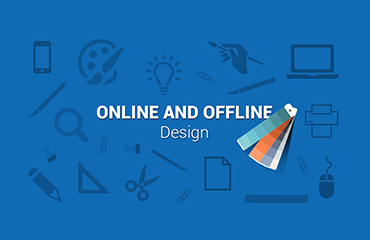Providing professional and affordable Web Design and Development since 2010.
AJSMEDIA™
BASINGSTOKE
T: 01256 411 936
M: 0 785 727 99 85
E: enquiries@ajsmedia.com
S: sales@ajsmedia.com
THE ORGANIC APPROACH TO
SEARCH ENGINE OPTIMISATION
The Organic Approach to SEO

Display advertising is online advertising that typically takes the form of banner ads. These may be simple static advertisements with eye-catching design and imagery or they might feature video, sound, animation or even interactive elements. Display advertising is usually considered a distinct category from search advertising, also known as pay-per-click advertising. That works by showing text-only advertisements alongside organic results in search engine listings when someone searches for particular keywords. If you’re looking to build the profile of your small business online, display advertising is an option you might want to consider. But what does it actually involve, and is it a worthwhile investment?
- The evolution of display advertising
- The first example of a display advertisement hit the internet in 1994. Display ad networks soon sprang up to help advertisers book relevant advertising space online and dedicated ad servers were developed to deliver the advertisements and track their success.
Website owners and marketers working on their behalf could now decide where to place display advertisements for maximum effect. They can appear anywhere online where advertising space is available for sale. This includes a huge range of websites, including extremely popular ones like YouTube and eBay, as well as blogs and social media platforms like Facebook and Twitter.
Inevitably people soon began to get fed up of being sold to whenever they went online, and developers came to their rescue with ad-blocking software. In 2015 PageFair discovered that around 12 million people in the UK (nearly 20% of the population) were using ad-blockers. Others have learnt to mentally tune banner advertisements out – a phenomenon known as banner blindness.
There are ways of getting around both these problems. More discreet forms of online advertising, referred to as native advertising. Native advertisements are styled to fit in with the other content on a page so they don’t actually appear to be advertisements. For example a native ad on Twitter might look just like a normal tweet apart from a small ‘Promoted by…’ label at the bottom.
Native display advertising also includes advertorial – essentially paid-for editorial content, which is designed to reinforce the credibility of a brand. It may also incorporate video, but carefully produced so it’s not obviously commercial.
- How effective is display advertising?
- Research shows that using display advertising increases online conversions – prospects becoming customers. However monitoring the number of clicks is probably not the best way to measure the success of your display advertising campaign. This is especially true when you consider that 60% of people admit that when they click on a banner ad on a mobile device it’s usually by accident!
The reality is that a lot of people will notice a display ad but deliberately not click on it. If it has caught their interest, they may decide to search for the company, product or service instead.
There is clear evidence that display advertising works to boost other forms of promotion. For example we’ve found that Yell customers who add display advertising to their package experience a 44% increase in click-throughs from their pay-per-click advertisements.
You could also use display advertising to drive traffic to helpful giveaways on your website, such as an e-book or how-to guide. This type of content marketing can build positive perceptions of your brand, taking potential customers a step closer to buying from you.
It’s important to note that the more times someone is expose to your brand, up to a point, the more likely they are to take an interest. This is where retargeting comes in – specifically targeting display advertisements at people who have already visited your website or searched for something you sell. Retargeted ads are more likely to result in both click-throughs and searches. They can also have a subtle positive influence on increasing awareness of your brand. Overdo it though and you’re likely to put people off.
Animated display ads are likely to attract more attention than static ones. Video in particular is being hailed as the biggest thing in display advertising at the moment. A recent study found that video advertisements gain 52% more impressions, attract 50% more clicks, have a 10% higher click-through rate and result in 27% more conversions.
It appears that the more subtle option of native advertising is often more effective than overt display advertising in generating trust and driving traffic. In fact people are up to 60% more likely to engage with native display advertisements compared to standard banner ads, less likely to ignore them and more likely to share them.
- Does it work for small businesses?
- Absolutely! And with great success.
- Like television advertising, display advertising is often seen as the domain of big businesses. But this needn’t be the case. Display ads are a great way to build your profile, increase brand awareness and give some oomph to your other promotional activities.
- Here are a few tips for using display advertising successfully to promote your small business:
- Segment your audience and develop specific advertisements for different categories, depending on demographic details where possible but also online actions performed. The more relevant your ads appear, the more impact they will have.
- Use clear, appealing calls to action to encourage people to engage with your ads.
- Consider running a display advertising campaign alongside a pay-per-click campaign to get the best possible value for money.
- If you have the budget, video advertising is worth exploring. This could be as simple as how-to videos sharing relevant tips.
- Retargeting is powerful. Use display advertising to promote time-sensitive offers aimed at recent visitors to your website.
- Native display advertisements can be affordable and effective options for small businesses. Examples include sponsored posts on Facebook or ‘Promoted by’ tweets on Twitter.
- Good design is essential, whether you’re trying to make a standard display ad stand out or a native ad blend.
Don’t just rate the success of your campaign by the number of clicks the ads achieve.
Display advertising’s greatest strength is its ability to reinforce the impact of your other advertising and marketing activities. Look out for an overall increase in traffic to your website and an uplift in sales.








